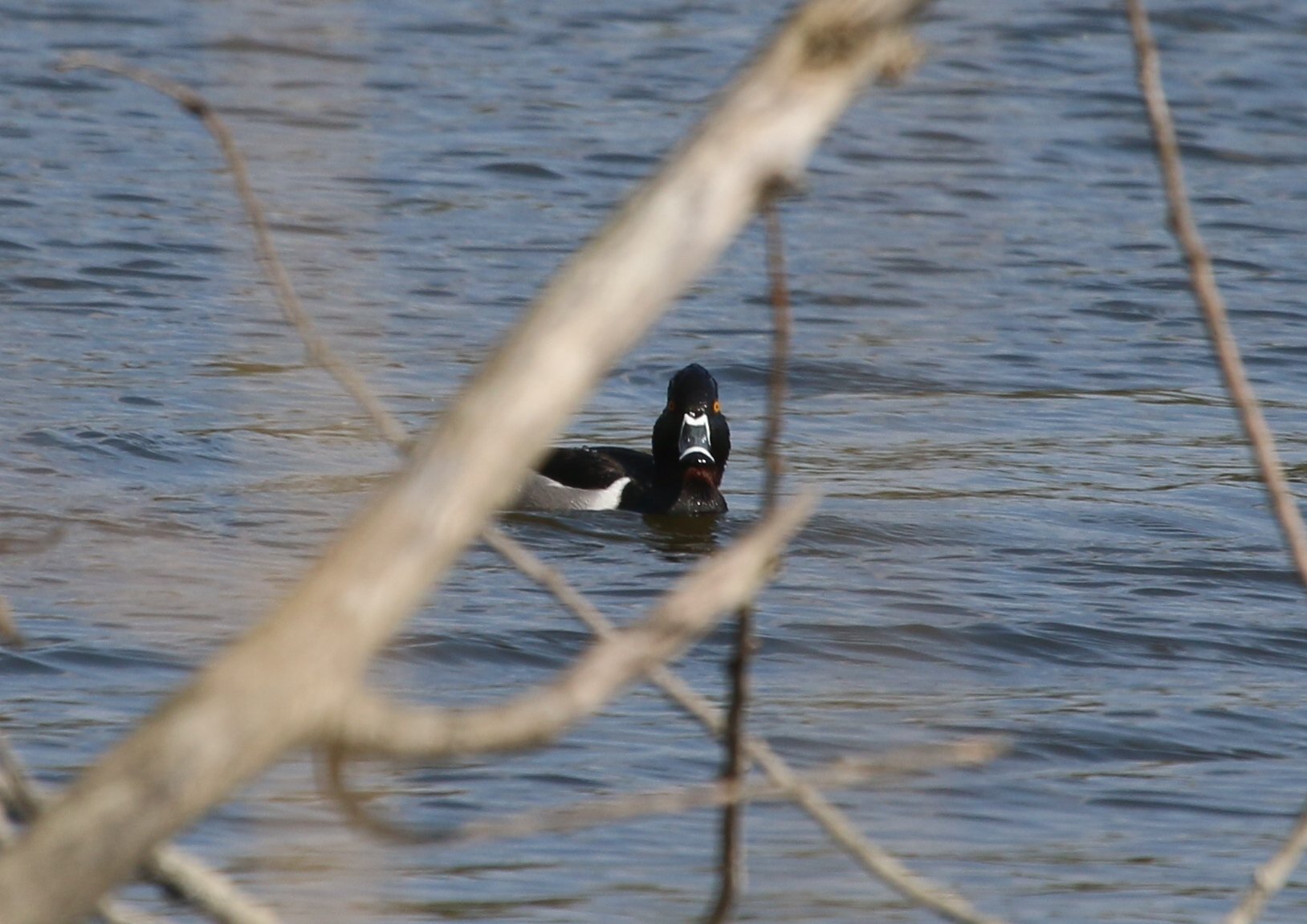
I recently participated in an “English Report Writing” training, sponsored of course by my employer, and this post will function as a test to see how well I was focussed on the lecture (instead of the sky outside the seminar room which may hold a black stork any day during spring migration). One of the most important topics – apart from grammar lessons and coffee breaks – rotated around knowing your audience. Allegedly, we are supposed to not write reports for ourselves but for others, like bosses, colleagues, etc., and so I figured that a profound analysis of my audience might also help me in my blogging career here on your favourite blog.
So, who then is my audience?
Well, I guess that’ll be you!
After this insightful first step, we have to take a closer look at who you really are and what you might expect from me. Since you are reading this blog, you most likely are a birder or a person with at least a mild interest in the avian world. And – let’s face it – chances are you live in North America. From a European blogger, you therefore probably expect to see posts on species that you know as European vagrants from your field guides and long to find on your local patch.
Like … the Tufted Duck!
Yes, the Tufted Duck is the ideal suject for this blog: it is reasonably common here in Germany and not hard to photograph, yet to you it is probably the subject of countless day dreams scanning through endless flocks of Lesser Scaup. I therefore specifically visited an old oxbow lake along the Rhine a few weeks ago to obtain the necessary photographic material for what would surely be a ground-breaking post here on 10,000 Birds, catapulting the site into the top league of the Internet, right next to Google, Yahoo and YouTube.
Well, that was the plan. See how it went…
Arriving at the scene, it was easy to spot a few Tufted Ducks, but hard to get decent views at them. Still, I was my optimistic self when I mounted the camera on my tripod and aimed at the ducks through the branches.
.
Then desaster struck: a vagrant, stage hog Ring-necked Duck! What by the coating of my camera was THIS thing doing here, apart from getting in between me and my Tufted Ducks?!
And so the photo bombing began…
.
And the splashing to ruin the tufts of the ducks for the photo shoot! All that – let alone flying across the Atlantic Ocean – for a little attention.
And whenever the photo bombs were duds, the Tufted Ducks were so distracted that the pictures were useless anyway!
Finally, the diving and splashing took its toll and the exhausted Ring-neck and I agreed to one undisturbed picture of a Tufted Duck – but only so long as the Ring-neck was equally present on the pic! Oh well, you can always place your hand over the left half of the picture…
Oh no, buddy, you won’t! We already have enough Aythya hybrids to deal with amongst our own species, we don’t need any North American genes messing our minds up any further!
Well, thank you.
A Tufted Duck showing off its tuft. Granted, the branches are in the way and the eyes are closed, but hey – considering I even had self-centred, attention-hungry North American vagrants to cope with, you really can’t complain!
A Ring-necked Duck showing off its ring neck. Okay, admittedly it is quite a nice species too, and I might really have been exceedingly happy about the opportunity to twitch it close to home.
.



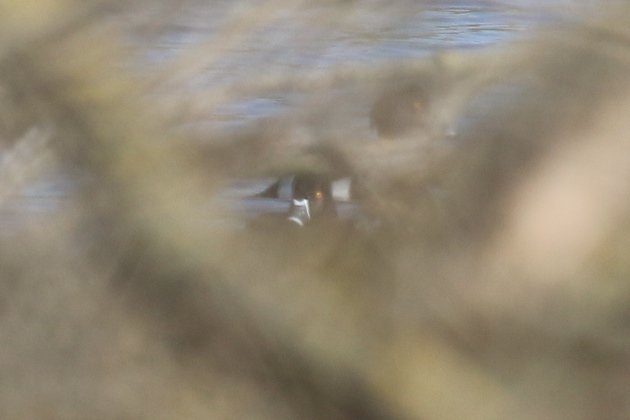
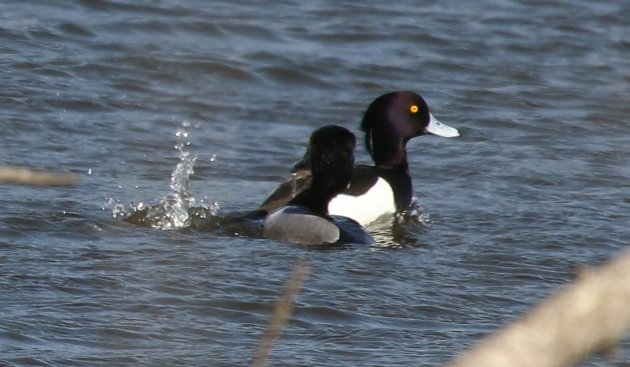
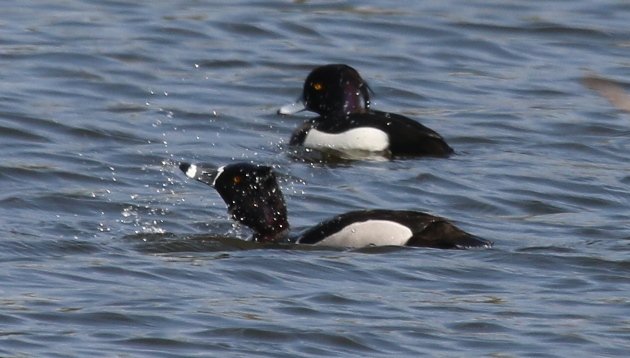
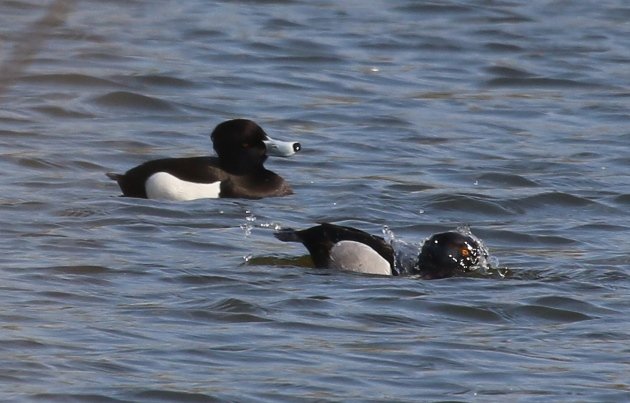
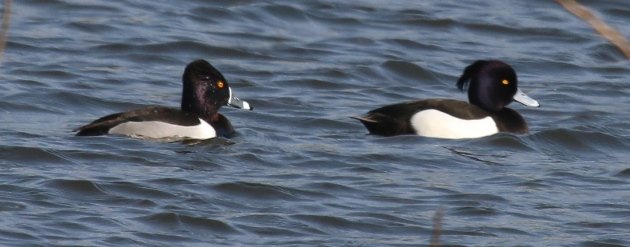

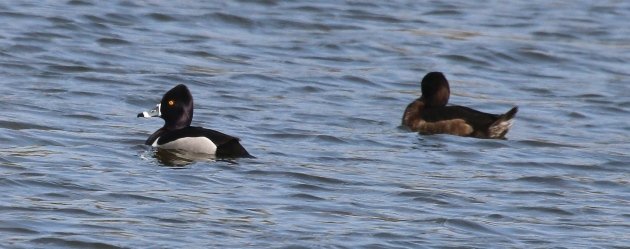
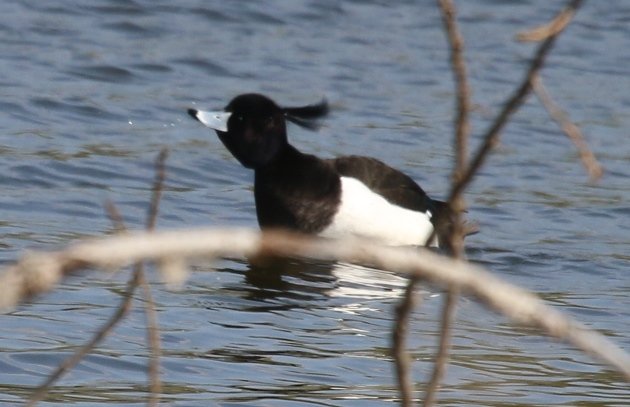
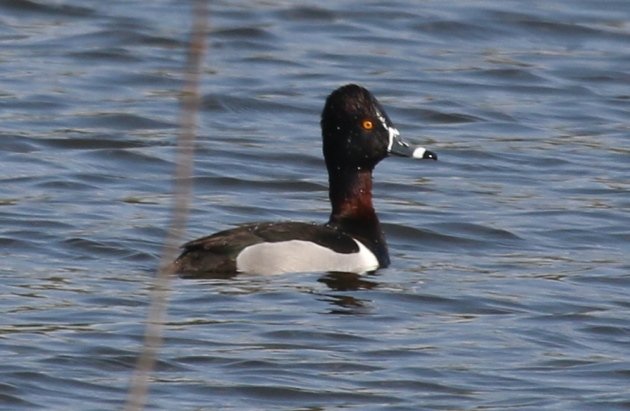











Twitching Ring-necked Ducks, Jochen? Have you sunk so low? They don’t even have tufts!
Not low enough to go twitch a Grace’s Warbler in NY on Jan 1st!